Ask Ethan: How Close Could Two Alien Civilizations Get To One Another?

Here on Earth, all the right conditions occurred for intelligent life to come about, but the nearest aliens, if they’re on another world, are light years away. But it doesn’t have to be that way at all!
Here on planet Earth, in orbit around the Sun, we’re the only intelligent-life game in town. There might be possibilities for either past life or microbial life elsewhere in the Solar System, but as far as intelligent, complex, differentiated and multicellular life goes, what’s on our world is far more advanced than anything else we could hope to find. Intelligent aliens, if they’re out there inhabiting another world, are at least four light years away. But must that be the case for aliens anywhere in the galaxy? That’s what our Patreon supporter Jason McCampbell wants to know:
What’s [the] closest two, independent intelligent civilizations could be, ignoring interstellar travel and assuming they develop in different star systems and follow roughly what we know as ‘life’? Globular clusters can have a high density of stars, but does too high a density rule out habitability? An astrophysicist in a dense cluster would have a much different view of the universe and the search for exoplanets.
There are lots of steps that have to happen to make life, but the ingredients for it are literally everywhere. Even if you’re restricting yourself to looking for life that looks (chemically) like us, the Universe is full of possibilities.
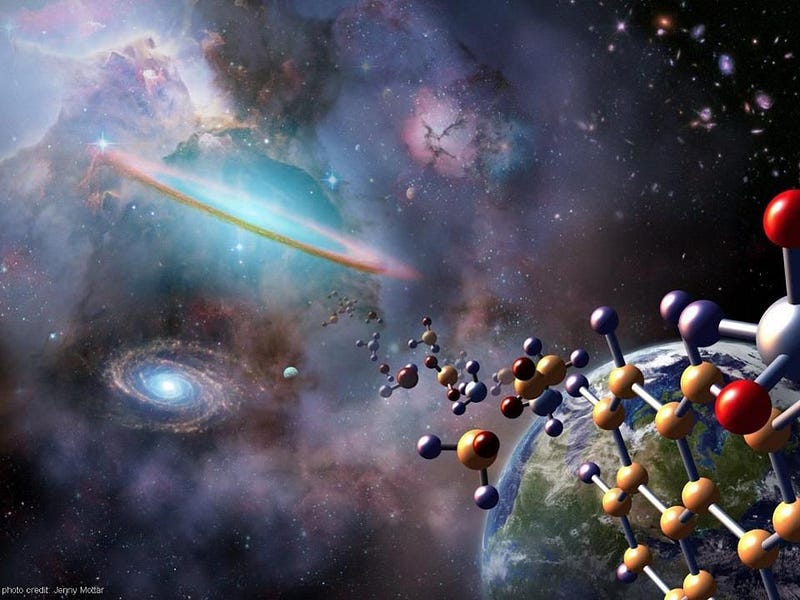
You need to form enough heavy elements so that you can have rocky planets, organic molecules, and the building blocks of life. The Universe isn’t born with these! In the aftermath of the Big Bang, the Universe is 99.999999% hydrogen and helium, with no carbon, no oxygen, no nitrogen, phosphorous, calcium, iron, or any of the other complex elements necessary for life. In order to get there, we have to have multiple generations of stars live, burn through their fuel, die in a supernova explosion, and recycle those newly-created heavy elements into the next generation of stars. We need neutron star-neutron star mergers to build up the heaviest elements, many of which are necessary for life processes here on Earth and in our bodies, in copious amounts. This requires a lot of astrophysics to make it so.
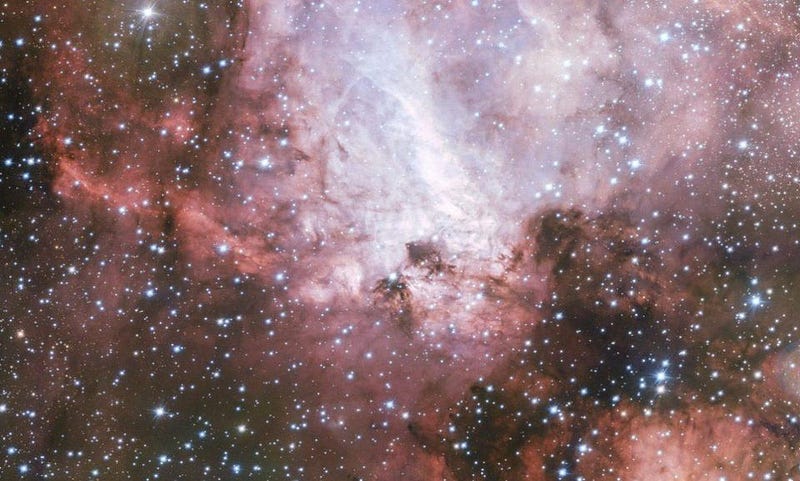
Even though Earth formed over 9 billion years after the Big Bang, the Universe didn’t have to wait so long. We classify stars into three populations:
- Population I: stars like the Sun, with 1–2% of the elements making them up being heavier than hydrogen and helium. This material is very processed and leads to solar systems with a mix of gas giants and rocky planets capable of housing life.
- Population II: these are mostly older, more pristine stars. They may only have 0.001–0.1% of the heavy elements the Sun has, and most of their worlds are diffuse, gassy worlds. These may be too primitive and too low in heavy elements for life.
- Population III: the first stars in the Universe, that must be entirely unpolluted by heavy elements. These haven’t yet been discovered, but are theoretically the first stars of all.
When we look at the earliest galaxies, they’re full of pretty much all Population II stars. But nearby, we have a mix of young-and-old, metal-rich and metal-poor stars.
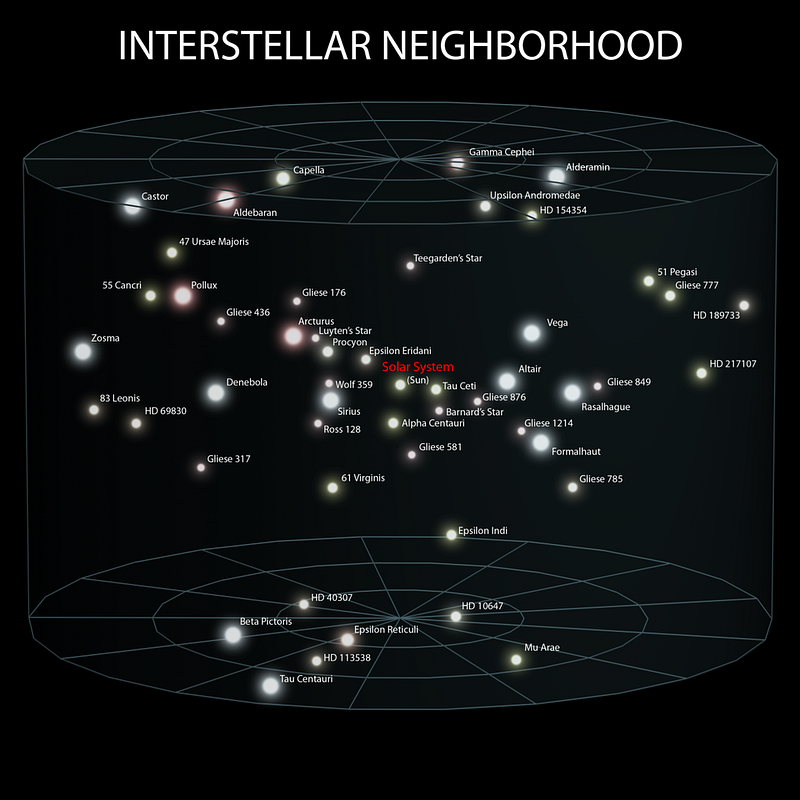
One of the most important lessons came from the Kepler mission, and specifically the system Kepler-444. This is a Population I star (with planets around it), but it’s much, much older than Earth. While our world is about 4.5 billion years old, Kepler-444 is 11.2 billion years old, meaning that the Universe could’ve formed a world like Earth very early on, at least ~7 billion years earlier than Earth formed. Given that possibility, and the fact that areas like the center of our galaxy got even more metal-rich than our region did very, very quickly, it’s possible that there are locations in the Universe (and perhaps even in the Milky Way) that are even more conducive to bringing about intelligent life than the Sun-Earth system is.
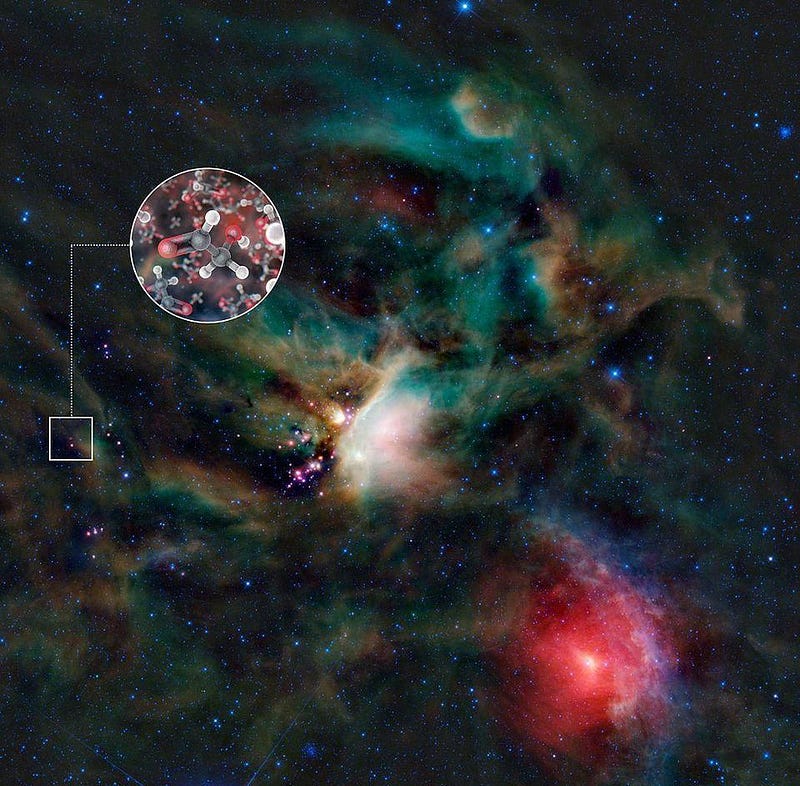
So given all that we know about where the stars that are good candidates for life can be, what’s the closest two alien civilizations could be to one another? Where would be the places to look? And what would the answers be under different circumstances? Let’s look at five major possibilities.
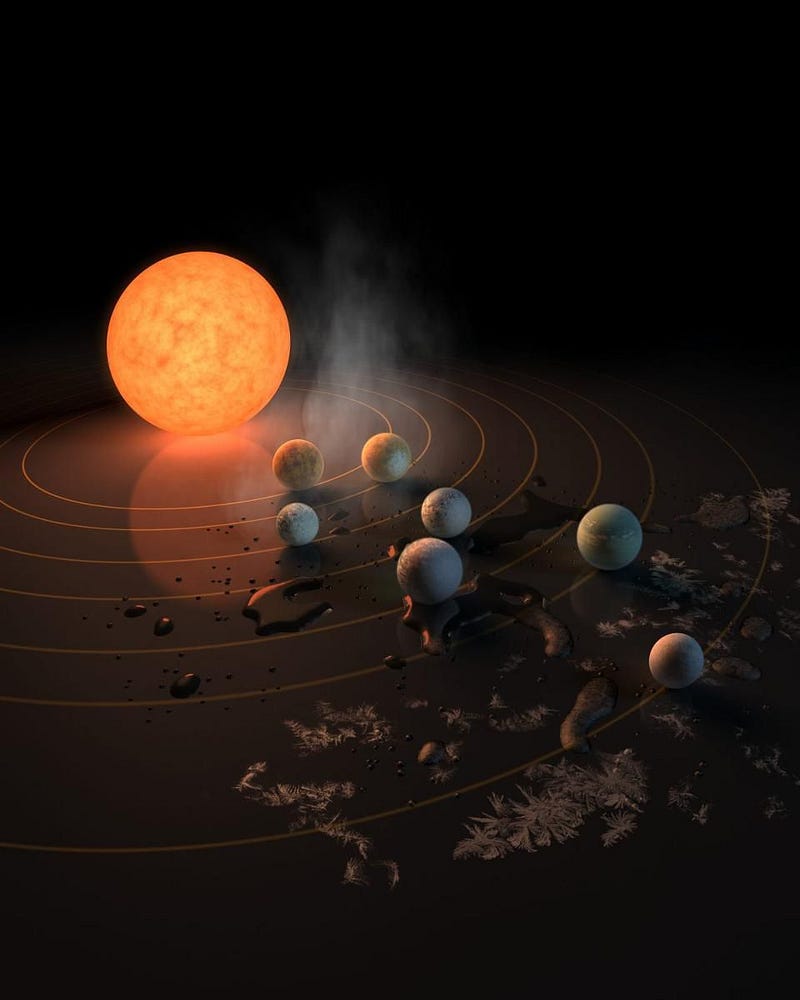
1.) The same solar system. This is the real dream. In the early days of our Solar System, it’s plausible that Venus, Earth, and Mars (and potentially even Theia, the hypothetical planet that collided with Earth to create the Moon) all had the same life-friendly conditions. They likely had a crust and atmosphere full of the ingredients for life, along with a past history of liquid water on their surface. Venus and Mars each, at closest approach to Earth, come within a few tens of millions of kilometers: 38 million for Venus and 54 million for Mars. But around an M-class (red dwarf) star, planetary separation distances are much smaller: separation distances are approximately only 1 million km between potentially habitable worlds in the TRAPPIST-1 system. Twin moons around a giant world, or a binary planet, could be even closer. If life succeeds once given certain conditions, why not twice in almost exactly the same place?
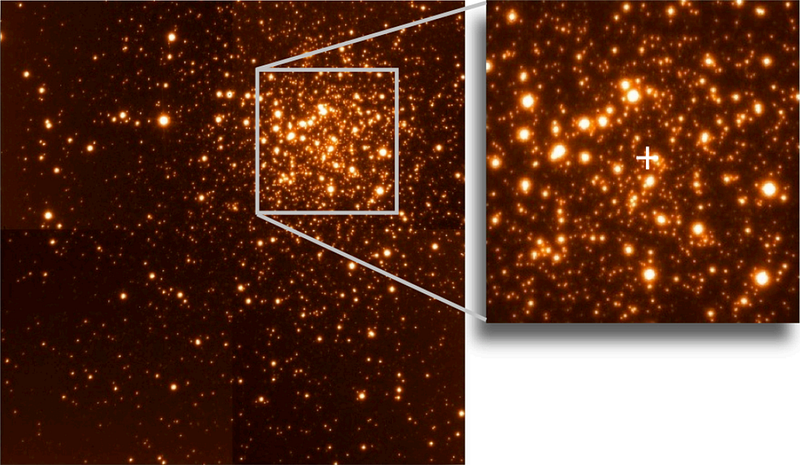
2.) Within a globular cluster. Globular clusters are massive collections of somewhere around hundreds of thousands of star contained within a sphere of perhaps a few dozen light years in radius. In the outer regions, stars are typically separated by a light year, but in the innermost regions of the densest clusters, star separations may be as small as the distance from the Sun to the Kuiper belt. The orbits of planets within those star systems should be stable even in these dense environments, and given that we know of globular clusters far younger than the 11.2 billion years that Kepler-444 is, there should be good candidates for life and habitability among them. A few hundred astronomical units, although this distance will change over time as stars move, could be a fascinatingly close encounter between two civilizations.
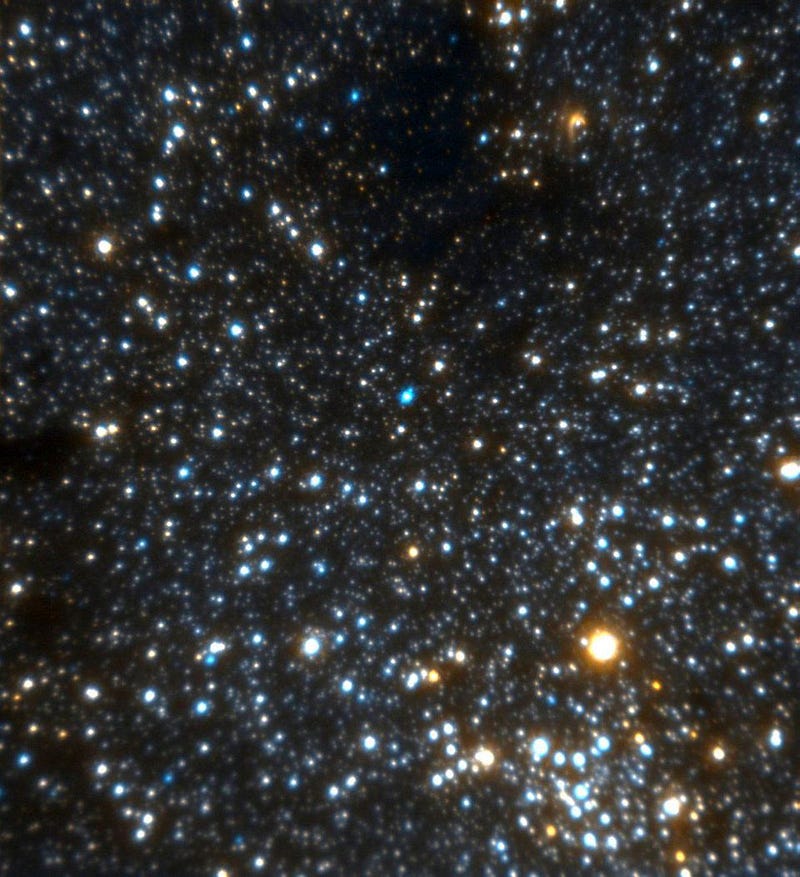
3.) Near the galactic center. The closer you get to the center of the galaxy, the denser the stars get. Within the central few light years, we have extremely high densities of stars, rivaling what we see in the cores of globular clusters. In some ways, the galactic center is an even denser environment, with large black holes, extremely massive stars, and new star-forming clusters, all things that globular clusters don’t have. But the problem with the stars that we see in the Milky Way’s core is that they’re all relatively young. Perhaps due to the volatility of the environment there, stars rarely make it to even a billion years of age. Despite the increased density, these stars are unlikely to have advanced civilizations. They just don’t live long enough.
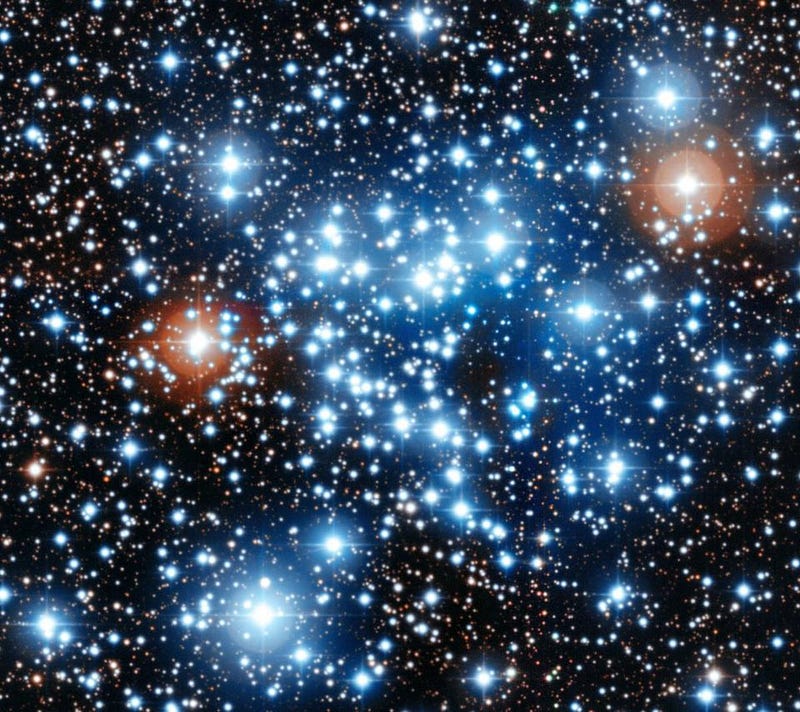
4.) In a dense star cluster or spiral arm. Okay, so what about the star clusters that form in the galactic plane? Spiral arms are denser than typical regions of a galaxy, and that’s where new stars are likely to form. The star clusters that remain from those epochs often contain thousands of stars located in a region just a few light years wide. But again, stars don’t remain in these environments for very long. The typical open star cluster dissociates after a few hundred million years, with only a small fraction lasting billions of years. Stars move in-and-out of spiral arms all the time, including the Sun. Overall, even though stars inside may have typical distances between them of between 0.1 and 1 light year, they’re unlikely to be good candidates for life.
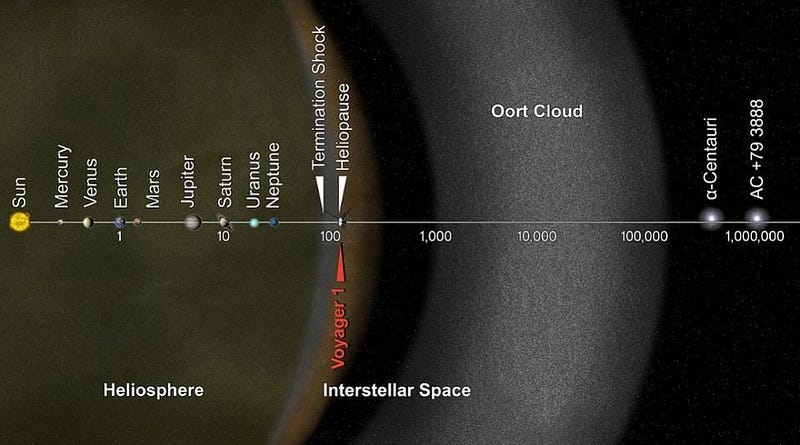
5.) Distributed throughout interstellar space. Otherwise, we come back to what we see in our own neighborhood: distances that are typically a few light years. As you get closer to the center of a galaxy, you can decrease that to the same distance you see in an open cluster: between 0.1–1 light years. But if you try to get closer than that, you run into the problem we’ve seen too close to the galactic center: mergers, interactions, and other catastrophes are likely to ruin your stable environment. You can get closer, but typical interstellar space isn’t the way to go. If you insist on it, your best bet is to wait for another star to pass close by, something that happens about once every million years for a typical star.
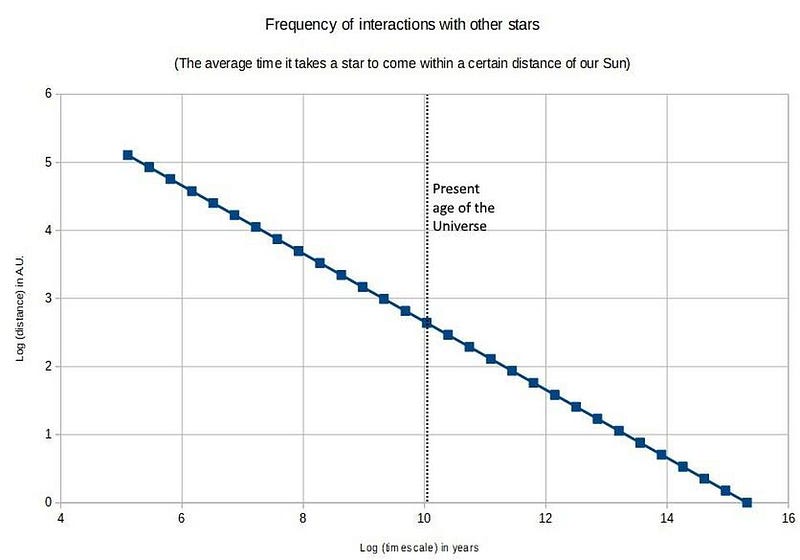
While we don’t expect intelligent alien life to be ubiquitous and plentiful throughout the Universe in the same way that planets and stars are, every such world that meets the right conditions is a chance. And every time you get a chance, that’s an opportunity, with finite odds, for success. Each one of these possibilities could be real! They may not be likely, but until we go out and find what is (and isn’t) out there, it’s vital to keep an open mind about what the Universe could bring to us as far as alien intelligence is concerned. The truth is no doubt out there, but it’s important to recognize that if we had gotten a lot luckier, it could be closer than we dare to imagine today.
Send in your Ask Ethan questions to startswithabang at gmail dot com!
Ethan Siegel is the author of Beyond the Galaxy and Treknology. You can pre-order his third book, currently in development: the Encyclopaedia Cosmologica.




